News
Web-To-Print: Taking the Steps Towards Choosing the Right Solution
Having made the decision to invest in web-to-print, the most immediate requirement is deciding what platform to use. There is rarely a ‘one-size-fits-all’ solution for web-to-print and a careful analysis of organisational wants, needs and requirements must be conducted. This means finding the right solution for your organisation can be a bit of a minefield unless you have a firm plan in place.
Knowing the challenges that web-to-print can help you to resolve is one thing, however choosing a solution is another. Here are three key steps towards helping you choose the right solution for your organisation:
Step 1: Define Your Goals and Objectives
The implementation of a web-to-print solution is determined heavily by your strategic objectives. Once you know what your goals are, you will know what processes you need to consider. If your objective is to streamline your marketing workflows through faster image and asset production, you will need to look at your current asset creation workflow. Consider how images are shared throughout the organisation and how they are being used. Look at how much time and resource is spent on the creation of these assets and find a solution that will either remove or speed up some of the steps involved.
There may be multiple objectives, but one primary objective should be determined early on as the top priority. Once this has been decided, other objectives can be tackled as a follow on phase. If used correctly, a web-to-print solution has the ability to enhance the sales and marketing efforts of a business, and improve the efficiency of workflows.
When defining your objectives, work with all key stakeholders within your organisation and identify the wider needs by asking yourself:
- Where is the company today, and where do we want it to be?
- How many assets are we currently storing? Knowing how many files you have now, and how that number will grow, will help you to plan capacity requirements.
- How will web-to-print integrate with the software tools and workflow solutions you already have in place?
- What files types are you looking to create and store? Web-to-print solutions will vary in regards to the file formats they support. You’ll need to know what files users store and if the system can optimise how you work with them.
- How many people will use the system and what access do you want to permit?
- How quickly do you want it up and running? If you want it set up ASAP, then you need to look for a vendor who can provide the system and train your teams quickly.
Answering these questions will give you a clearer vision of what you want to achieve from implementing web-to-print. Failing to distinguish a clear view of what you want to accomplish will ultimately result in money being wasted on a solution that isn’t right for your organisation.
Step 2: Outline the Critical Features You Will Require
Investing in software is a large commitment. Not only will it potentially require monetary investment, but it also entails time and resources. Therefore, it only makes sense to compare all options and adopt the solution with the critical features you’ll need.
After analysing your goals and expectations, decide on a list of critical features that will help you and your team to get the most out of your solution day in, day out. Ask yourself:
- Do I need a system that can help me manage brand consistency and messaging?
- Are you looking for a solution to not only store and manage your assets but also help you create assets?
- Do you want a solution that will act as a central resource point which facilitates an approval process?
- Do you want a solution that runs online and doesn’t require the need to download software?
- Is the solution easy to use? Web-to-print software should be used to help your company and simplify its marketing efforts. The solution should be user-friendly and consideration should be taken into how much time the end user is going to need to get the hang of it.
Here are some key features you may want to consider looking for when you decide on a web-to-print provider:
Asset Repositories: One of the biggest issues multi-site marketers face is that different internal teams will manage different projects such as a website, a social media campaign or the production of sales materials. As a result assets associated with these projects get stored within their individual department and not in one collective repository. Implementing a web-to-print solution with asset storage makes it incredibly easy to access, create and distribute approved design assets. This ensures that your teams are using the right version of the right asset ensuring overall brand consistency.
Accessible Online: It may be essential to adopt a web-to-print solution that is hosted online, especially if the business operates across multiple sites and there is a requirement to access assets from various locations. With no software to download, it can be accessed 24/7 on any device, anywhere in the world.
Editable Templates: One of the biggest costs relating to the production of marketing assets is the use of a graphic designer. From the original designs to re-edits – the costs can quickly accumulate. With some web-to-print solutions, you can upload pre-approved templates that allow you to customise only agreed elements. This could remove the need for a designer to artwork smaller jobs such as business cards and letterheads. This means your designers time can be better spent on the more important tasks.
Order Print Runs: Starting print runs can be a laborious and time consuming process. Calling multiple vendors, requesting quotes, designing and sending files, waiting for proofs, making corrections, and waiting for print products to arrive can massively slow down time-to-market. A web-to-print solution can eliminate many of these tasks making the process of starting print runs more streamlined. The order process can take a matter of minutes, instead of days.
Track Orders: If you have numerous people ordering printed assets from numerous vendors, costs can very quickly spiral out of control. With an effective web-to-print solution, you can manage budgets by seeing exactly who is ordering what before approving the order. By using a single vendor you have much tighter controls over your budgets.
It’s easy to get distracted by a sleek user interface or flashy functionality without a clear understanding of your requirements. Having that understanding of your requirements will ensure the solution you adopt is best suited to your needs.
Step 3: Find the Right Provider
Choosing the right provider is crucial to your web-to-print experience. It’s important to build a relationship with a vendor who will support you, not only in the initial implementation stage, but also into the future. When looking at vendors, follow these steps:
- Look at the features that each solution offers. Do you feel confident that the solution will meld with your organisation?
- Read customer case-studies about potential providers – they’re an honest indicator of how satisfied a vendor’s customers are.
- Ask for a demo or a free-trial. This is not only a great way to explore the functionality for you, but it provides an opportunity to see how the vendor operates.
Remember, whichever web-to-print solution you choose, it has to be right for your organisation. This is an investment and a decision that you will need to work with daily, so spend the time evaluating all your options to ensure you’re making the right decision.
Brand Centurion
Choosing the right web-to-print solution for your company can be a time-consuming exercise, especially during the research period. Brand Centurion from Burst Digital is a powerful marketing portal with web-to-print capabilities that can help you overcome many of the issues faced by multi-site marketers. For a demo of Brand Centurion and its full capabilities, contact us today!







